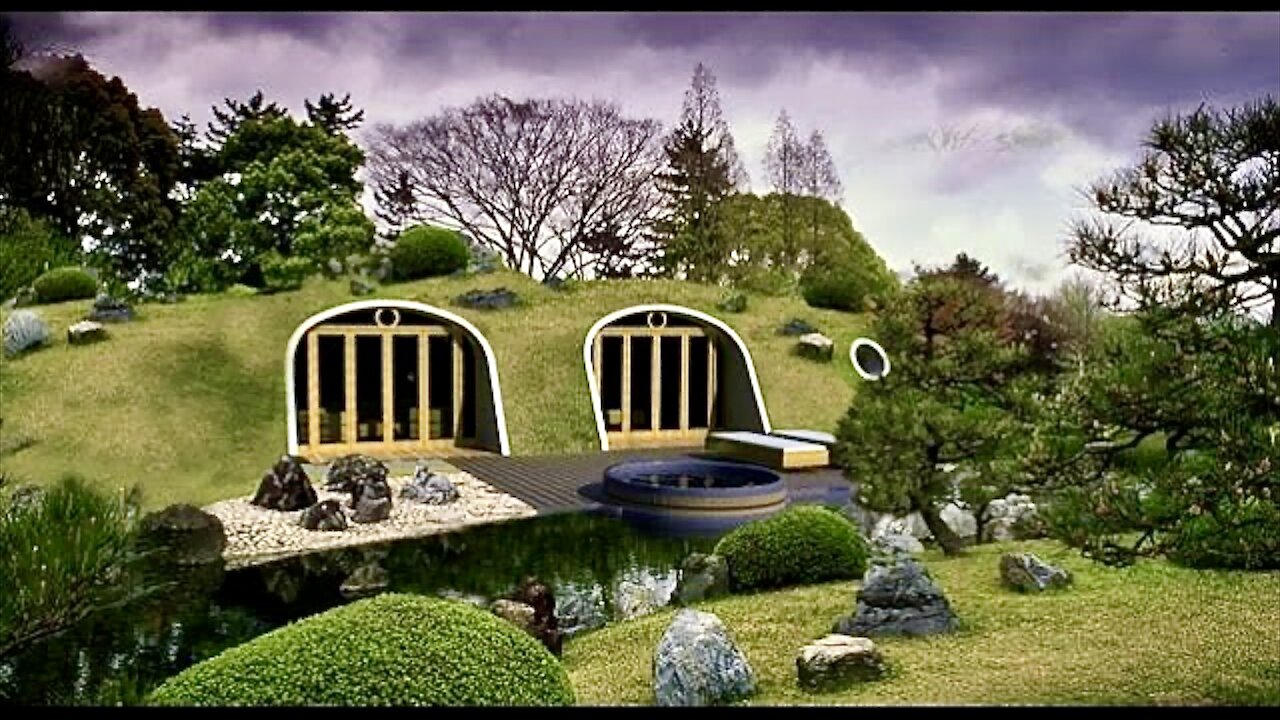Premium Only Content

Amazing Hobbit Homes ~ Prefabricated Domes ~ Earth Housing
Earth-sheltered houses have long been known to be very energy- efKcient, with the thermal mass of all that dirt keeping the temperature relatively even all year. However they have often been expensive to build and difKcult to make totally waterproof. Now a Florida company, Green Magic Homes, has designed a prefabricated system of Kber-reinforced polymers (FRP) where you can roll your own earth sheltered house at a reasonable price (US $41 per square foot for the shells). Their system addresses the problems of weight and cost: The Green Magic Homes system has addressed these problems in an entirely new way, using the age-old methods of building with earth in conjunction with the space-age technology of composite materials. The inner shell of the buildings is very strong, light, waterproof, and modular, and the earth covering is constructed in such a way that it collaborates structurally with the shell because of its layered construction and the vaulted geometry of the system.
The FRP components are made in their factory....Assembled on site with glue and stainless steel screws through those aanges sticking up, then covered with soil and planting. According to their FAQ, there can be 8 inches of soil on the top, and they are designed to handle about 44 pounds per square foot of live load on top of that. However they are inconsistent, they also make some claims about the R value of soil and how it is different than insulation:
The R value or heat transfer resistance value of a GREEN MAGIC HOME, is approximately 1 per every 10 cm of Earth. A typical GREEN MAGIC HOME has an average of 60 centimeters between walls and deck, which would give an R factor of 6. However, the thermal character of the mass of the Earth is quite different from the materials designed and used principally for the resistance to the transfer of heat (R value) such as polystyrene or polyurethane foam. When changing from soil to a less massive "insulating" material, you should understand the design performance with regards to heat capacity of the building and/or soil mass (K-value). A massive soil wall or roof can store heat energy to even out the temperature swings of day--lightweight insulation does not perform this way. The thermal value you get from 18 inches of soil far surpasses the 4.5 R-value (0.25 per inch). The use of earth as a large capacity heat storage makes it possible not only to reduce such buildings’ demand for heating and cooling energy, but also helps to preserve the local microclimate.
Music: What Must Be (Old Timey Mix) by Dhruva Aliman
Amazon- https://amzn.to/3eAjEgC
https://music.apple.com/us/artist/dhruva-aliman/363563637
https://dhruvaaliman.bandcamp.com/album/what-must-be
http://www.dhruvaaliman.com/
Spotify - https://open.spotify.com/artist/5XiFCr9iBKE6Cupltgnlet
#lordoftherings
#design
#architecture
-
 52:31
52:31
Seeker Land
19 days agoMystery of the 3,000 Year Old Girl from Egtved Denmark - Life in the Bronze Age
168 -
 LIVE
LIVE
SpartakusLIVE
5 hours agoThe Conqueror of Corona || Delta Force LATER
328 watching -
 DVR
DVR
barstoolsports
7 hours ago$250k Winner Revealed With Final Votes And Reunion | Surviving Barstool S4 Finale
58.6K4 -
 2:05:49
2:05:49
Kim Iversen
5 hours agoTikTok Ban BACKFIRES: Millions Flee To New App Showing The REAL China
57.8K60 -
 1:35:12
1:35:12
Glenn Greenwald
7 hours agoCNN And Jake Tapper In Deep Trouble In Defamation Lawsuit: With Jonathan Turley; TikTok Ban, Trump's China Policy, And More With Arnaud Bertrand | SYSTEM UPDATE SHOW #390
67.8K36 -
 12:24
12:24
Dan Bongino Show Clips
8 hours agoPresident Trump Full Interview - 01/16/25
101K274 -
 LIVE
LIVE
Man in America
7 hours agoBig Pharma's Deadliest Lie is Being EXPOSED to the Masses w/ Jonathan Otto
1,581 watching -

Precision Rifle Network
1 day agoS4E2 Guns & Grub - Training Vs. Competition
5.24K -
 58:27
58:27
Flyover Conservatives
22 hours agoGarrett Ziegler Breaks Down Special Councilor’s Report on Hunter Biden. Insights for Trump’s Top Picks. | FOC Show
22.9K1 -
 44:54
44:54
Steve-O's Wild Ride! Podcast
11 hours ago $6.40 earnedMark Wahlberg Threatened To Beat Up Jackass Cast Member - Wild Ride #251
85.4K10